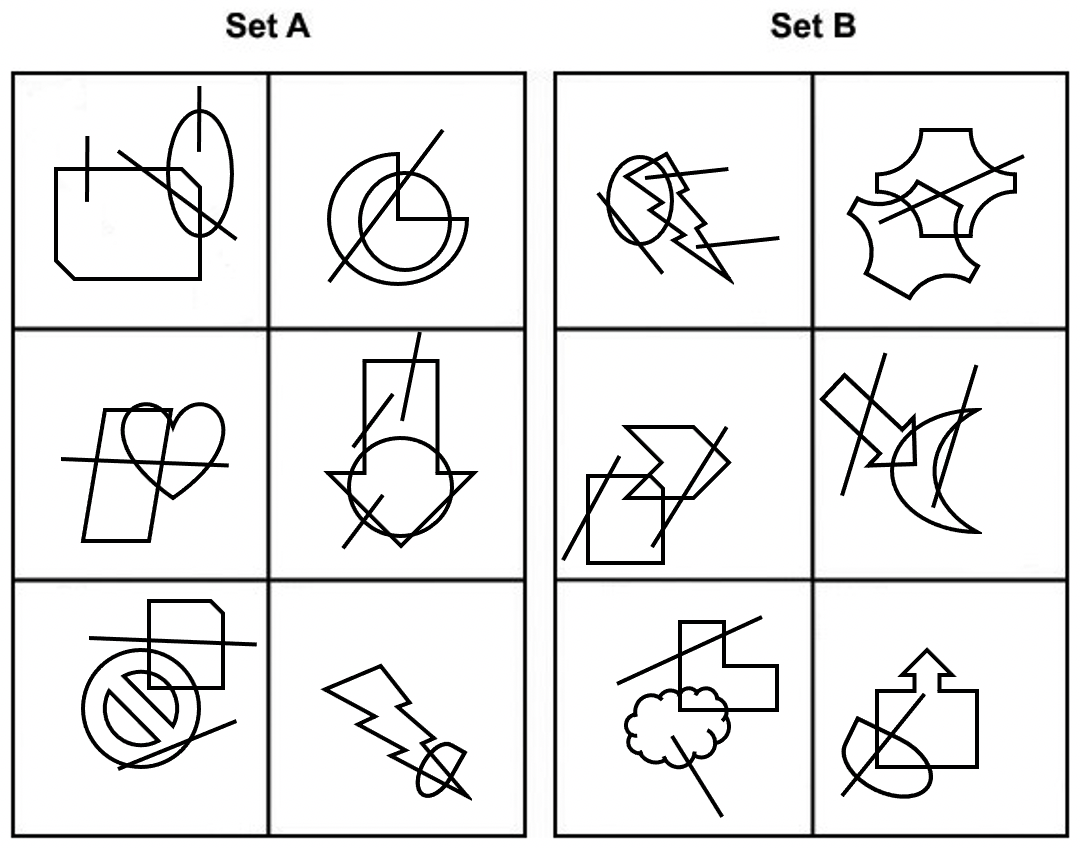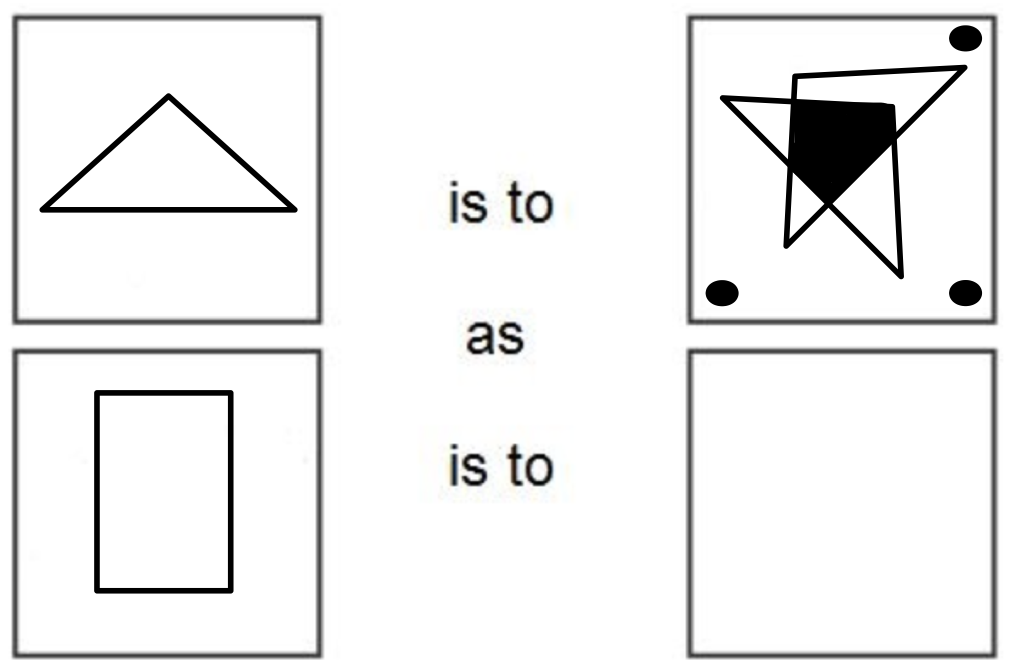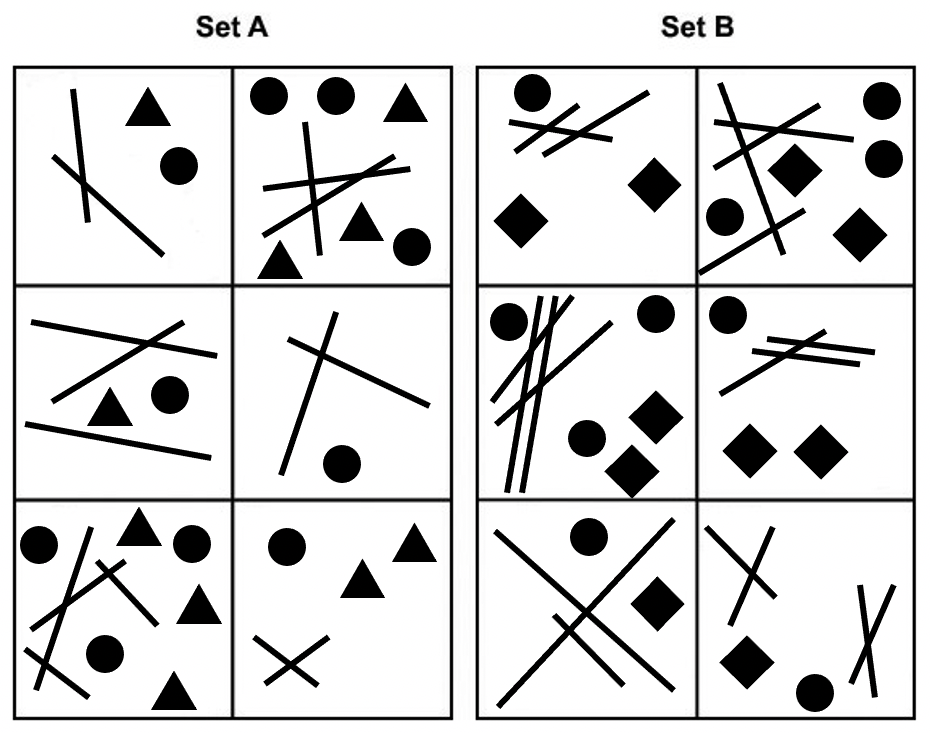10 min read
|
Read 16865 times
What is UCAT Abstract Reasoning?
Abstract Reasoning is the fourth subtest of the
UCAT ® exam
and is designed to assess your ability to identify patterns amongst several abstract shapes whilst also filtering out distractions. UCAT ®
Abstract Reasoning questions and answers generally involve a series of abstract patterns and shapes, asking you to identify which of them belong, follow or complete a specific pattern.
Why is Abstract Reasoning Important for Medicine?
According to UCAT ®
ANZ, UCAT ®
Abstract Reasoning aims to assess your ability to “change track, critically evaluate and generate hypotheses and requires you to query judgements.” So you might be wondering, how does sorting abstract patterns relate to getting into medical school? Abstract Reasoning is important for clinicians as they need to consider various diagnoses from a set of symptoms, symptoms which are often vague and which overlap various conditions. Doctors and other health professionals are required to make judgments about this information and differentiate the important information and patterns from the distractions.
UCAT Abstract Reasoning Structure
Throughout the UCAT ® Abstract Reasoning subtest, you will come across four different question types. These will be explained in greater detail in the
“UCAT Abstract Reasoning Question Types”
section below. These questions also have different formats to their answer options.
How much time do you have on UCAT Abstract Reasoning?
UCAT ® Abstract Reasoning consists of 55 questions to be completed in 13 minutes. This allows for approximately 14 seconds per question. Whilst UCAT ®
Abstract Reasoning is definitely one of the more time-pressured subtests, the timing isn’t as bad as it sounds. This is because for most questions, one stem will correspond to around 4-5 questions. Once you have identified a pattern, this will apply for several questions. So rather than spending 14 seconds of UCAT ®
Abstract Reasoning time per question, you will spend around 30 seconds identifying a pattern and then around 5-10 second choosing the correct answers.
UCAT Abstract Reasoning Timing
| Subtest |
Test Time |
Number of Questions |
Average Time per Question |
| UCAT Abstract Reasoning |
13 minutes |
55 questions |
14 seconds |
UCAT Abstract Reasoning Question Types
There are 4 types of UCAT ® Abstract Reasoning questions:
Each UCAT ® Abstract Reasoning question type is explained in more detail below, along with some example questions.
Set A, Set B or Neither - UCAT Abstract Reasoning Questions
This is the most common question type in the UCAT ® Abstract Reasoning subtest, composing around 38 of the 55 total questions. You will be presented with two sets of shapes labelled Set A and Set B and you are required to decide whether a given shape belongs to either Set A, Set B or neither sets. In these questions, it is essential to focus on the relevant patterns that apply across the whole set and ignore the distractors. These questions will often have five questions related to each stem. To approach these questions, you should firstly identify the pattern before answering the successive questions.The question format is shown below along with an example of a question.
Question 1
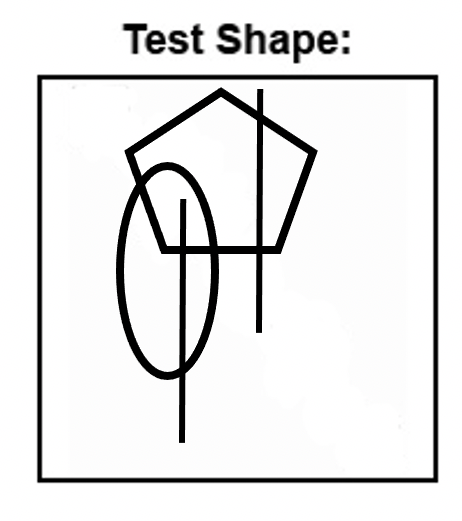
-
Set A
-
Set B
-
Neither
Question 2
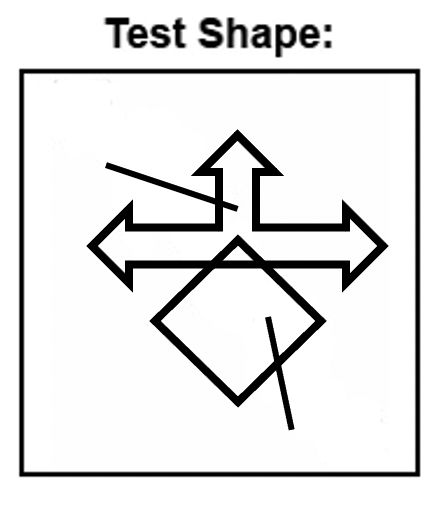
-
Set A
-
Set B
-
Neither
Question 3

-
Set A
-
Set B
-
Neither
Question 4
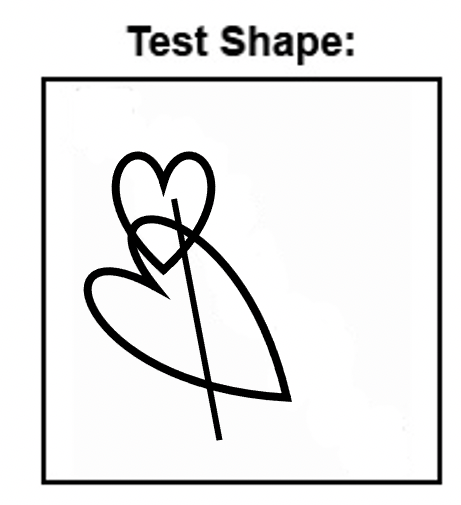
-
Set A
-
Set B
-
Neither
Linear Pattern Completion - UCAT Abstract Reasoning Questions
This is the second most common question type in UCAT ® Abstract Reasoning. You will be presented with a series of four images that follow a progressive pattern. You will then be asked which of the four/five answer options will complete the series. Compared to the previous UCAT ®
Abstract Reasoning question type, linear pattern completion requires you to find a progressive relationship rather than a common overall pattern. These are always standalone questions with one stem corresponding to one question.
Which figure completes the series?
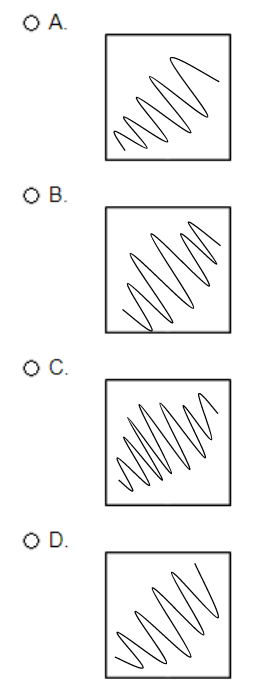
Analogous Pattern Completion - UCAT Abstract Reasoning Questions
In this type of UCAT ® Abstract Reasoning question, you will be presented with two pairs of images in the format: "Image A is to Image B as Image C is to Image D." Image D will be left blank and it is up to you to recognise which of the answer options should correspond with Image D. These are also standalone questions with one stem corresponding to one question.
Which figure completes the statement?
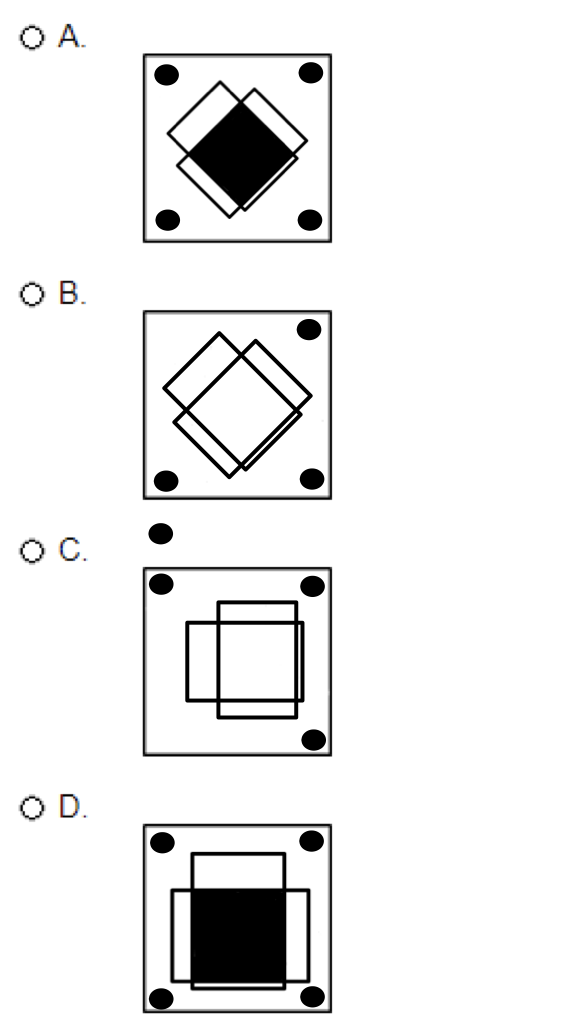
Set A or Set B - UCAT Abstract Reasoning Questions
These are similar to the Set A, Set B or neither question type, however in this case you will be given four or five shapes as the answer options and you are required to identify which would fit into the pattern of Set A or Set B. Again, these are usually accompanied by four or five subsequent questions for each stem. When approaching this UCAT ® Abstract Reasoning question type, it is essentially the same approach as with the first question type.
Question 1
Which of the following test shapes belong in Set A?

Question 2
Which of the following test shapes belong in Set B?

Question 3
Which of the following test shapes belong in Set B?

Question 4
Which of the following test shapes belong in Set B?

How to Prepare for UCAT Abstract Reasoning
Whilst there are certain tips and strategies that can help you improve in UCAT ® Abstract Reasoning, it ultimately comes down to the
practice and preparation
that allows you to improve. Knowing the different question types as well as putting into practice some of the following UCAT ®
Abstract Reasoning tips will allow you to improve. Remember that perfect practice makes perfect. Going through hundreds of questions will only do you good if you take the necessary time to understand and recognise your mistakes. Consistent UCAT ®
Abstract Reasoning practice will give you the best chance at performing well.
UCAT Abstract Reasoning Tips
If you're wondering how to improve Abstract Reasoning UCAT ®, below you will find three useful tips from our expert tutors:
Learn the common patterns
Identifying UCAT ® Abstract Reasoning patterns is definitely a difficult task and many students may find this quite unnatural. Having an idea of what you are looking for can certainly give you a head start towards finding the pattern. These patterns can be divided up into several different types:
UCAT Abstract Reasoning Patterns
| Pattern Type |
What to Look For |
| Number |
Corners, sides, even or odd, multiples of numbers, addition and subtraction |
| Shape |
The same shape, symmetry, curved or straight |
| Colour |
Black, white, grey, stripped, dotted |
| Arrangement |
Specific locations, relative position |
A couple of UCAT ® Abstract Reasoning mnemonics that can help with this include:
|
SCANS
|
Shape, colour, arrangement, number, symmetry |
|
BADCAT
|
Borders, arrangement, dimensions, colour, angles, transitions |
|
CPR
|
Colour, position, rotation |
Whilst these concepts are certainly a great starting point, practising and exposing yourself to as many different patterns as possible will give you the best chance at performing well in UCAT ® Abstract Reasoning.
Focus on the simplest box
Given that each set contains the same pattern or rule, it is likely that the least complex shape will have the least distractions. This will allow you to focus on the crucial elements that actually compose the rule. Using this to compare with other boxes will allow you to find the points of similarity and dissimilarity, thereby allowing you to identify the pattern.
Use the whiteboard when necessary
Occasionally, you will come across a set with multiple patterns and complex conditions. For these, it can be easy to forget the rules and mix them up, costing you easy marks if you have already identified the pattern. Take advantage of the whiteboard when you feel as though you need to. You can jot down points about the rules to ensure you don’t make these silly mistakes.
What is a Good UCAT Abstract Reasoning Score?
As with all the other subtests of the UCAT ® exam, the Abstract Reasoning section is scored between 300 and 900. The average mark for Verbal Reasoning and Decision Making questions is typically lower than that of Quantitative Reasoning and Abstract Reasoning questions.
For the UCAT ® Decision Making subtest, a rough guide for where you would want to score to be competitive would be:
|
UCAT ® Abstract Reasoning
|
| Average Mark |
643 |
| Competitive Mark |
720 |
|
90th Percentile
Estimate
|
800
|
Please note that the average mark is calculated from the average of the past four years but the competitive mark is a rough estimate. The 90th percentile estimate is given as an average of the mean mark of such candidates from 2020, 2021, and 2022.
In 2022, the median UCAT ® Abstract Reasoning score was 650 out of the available 900 points. A competitive candidate usually lies in and around the 9th decile, i.e. the 90th percentile. For the 2022 exam, this corresponded to a score of 830. The first four cognitive subtests are usually summed up for a final score out of 3600. The 2022 statistics are as follows:
|
Verbal Reasoning |
Decision Making |
Quantitative Reasoning |
Abstract Reasoning |
Total Cognitive Scaled Score |
SJT |
|
Mean
|
578 |
630 |
672 |
662
|
2543 |
568 |
|
|
|
|
|
|
|
|
|
1st decile
|
480 |
510 |
550 |
530
|
2130 |
460 |
|
2nd decile
|
520 |
550 |
590 |
570
|
2260 |
504 |
|
3rd decile
|
540 |
580 |
610 |
600
|
2360 |
535 |
|
4th decile
|
550 |
610 |
630 |
620
|
2450 |
559 |
|
5th decile
|
580 |
630 |
660 |
650
|
2530 |
581 |
|
6th decile
|
590 |
660 |
680 |
680
|
2610 |
599 |
|
7th decile
|
610 |
680 |
710 |
710
|
2710 |
618 |
|
8th decile
|
640 |
710 |
760 |
750
|
2830 |
639 |
|
9th decile
|
680 |
750 |
810 |
830
|
2980 |
663 |
As with any other exam, it is important to remain composed and not get flustered throughout the exam as it is possible to make up for poor marks in one section by outperforming in another.
UCAT Abstract Reasoning average scores
|
UCAT ® Abstract Reasoning
|
2019 |
2020 |
2021 |
2022 |
| 629 |
644 |
650 |
650 |
Approaching UCAT Abstract Reasoning Questions on Exam Day
Tackling UCAT ® Abstract Reasoning questions on exam day can be daunting despite all the practice questions you've completed and all the preparation you've done. Here are some tips to help you do well on exam day and make the most of all your preparation:
Guess, flag and move on
Don't be afraid to guess, flag questions and move on. It can be very easy to become obsessed with solving a difficult question and sacrifice your chance at solving easier questions. On exam day, you should guess questions which you find yourself struggling with before flagging and moving onto the next question. This will give you the best chance at answering as many questions before time runs out. Knowing that you have filled in all the answers before coming back to the more difficult questions can help reduce the mental toll and pressure that flusters many students.
Know your timing
As with any exam, keep your eye on the timer. This will ensure that you don’t leave any questions blank by the end of the exam. You don’t lose marks for incorrect answers, so filling in everything, whether or not you know the answer will give you the best chance at maximising your UCAT ® scores.
Go with the pattern
Often, UCAT ® Abstract Reasoning stems will consist of more than one pattern, however these may be difficult to uncover. If you have only found one pattern and are finding yourself burning away time, it is best to use this pattern to answer as many of the questions as possible. Often this will lead to 2 or 3 out of 5 which is a better chance than nothing. Remember to flag these questions and return to them at the end of the exam if you have time.
Use keyboard shortcuts
Given the speed necessary throughout the UCAT ® Abstract Reasoning subtest, it can be helpful to know some of the keyboard shortcuts to save some time. These can be used to better navigate the test.
-
Alt + N is to proceed to the next question
-
Alt + P is to go to the previous question
-
Alt + F will flag the question
Throughout your preparation, try using these shortcuts to practise your skills and exam strategy for the UCAT ® Abstract Reasoning subtest and other subtests.
UCAT Abstract Reasoning Final Advice
Ultimately, your UCAT ® score will come down to the amount and quality of the preparation that you have done. Knowing "How do I practise UCAT Abstract Reasoning?" as well as the key question types and exposing yourself to as many different patterns and questions will give you the best chance to perform well in UCAT ® Abstract Reasoning. Putting into practice these strategies and time-saving skills will help you perform your best on exam day.
Further Preparation Materials
-
Everything you need to know on how to study for the UCAT ®
Exam, including tips for each of the five sections.
-
An overview of what to expect from UCAT ®
Quantitative Reasoning and how to prepare.
-
An overview of what to expect from UCAT ®
Situational Judgement and how to prepare.






